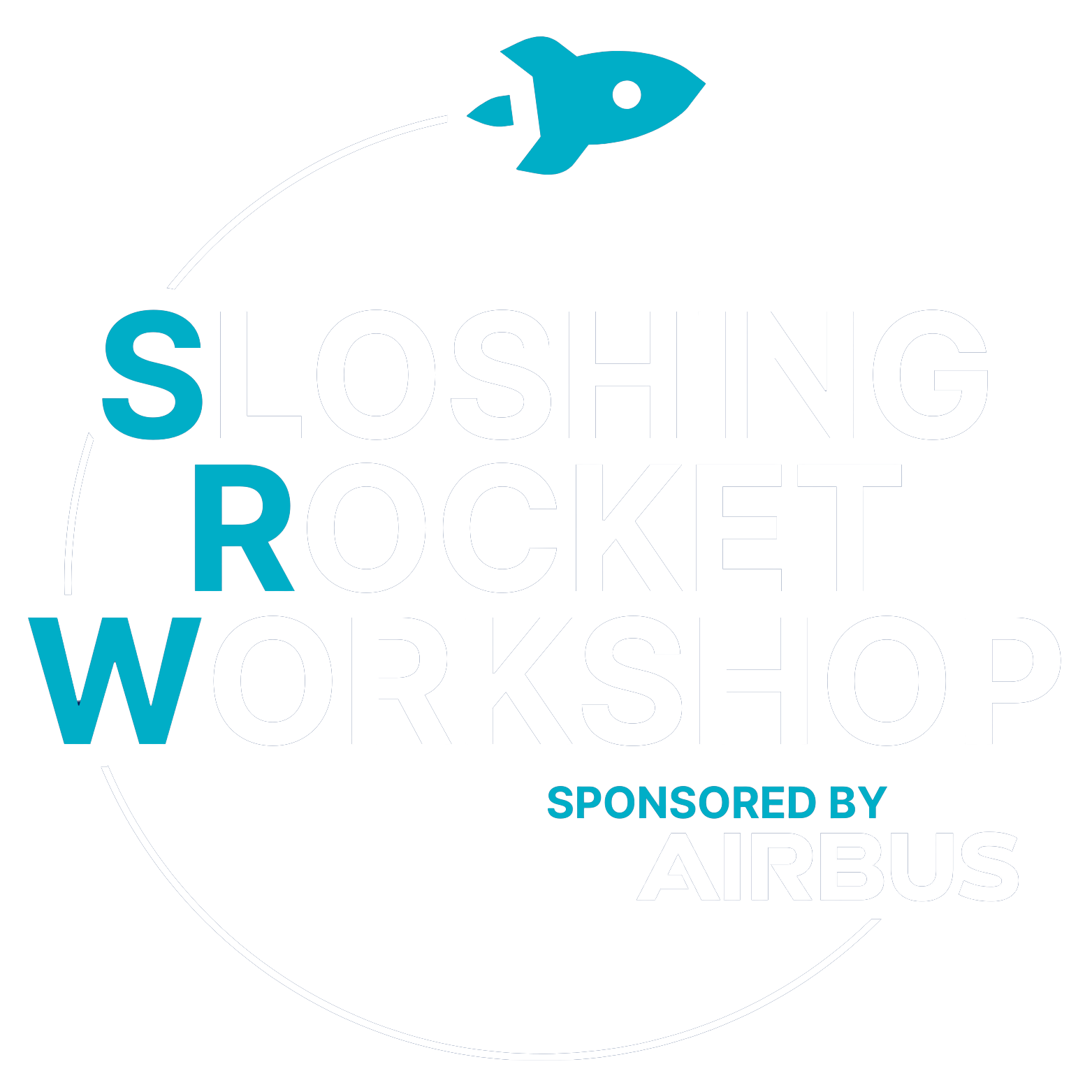
Powered by EUROAVIA & AIRBUS
OUR BACKGROUND
Modeling the behavior of sloshing liquids is of significant interest in the Aerospace industry.
In aircraft design, the study of fuel movement in tanks is of paramount importance for the design of the fuel management control system, the evaluation of the handling characteristics of the aircraft, and ultimately the assessment of the structural integrity of the containment structure.
For modern satellites, the design is often driven towards lightweight structures, high pointing accuracy, and long-life expectations. These can result in a large proportion of the overall weight being allocated to the liquid propellant. Therefore, the movement of the liquid fuel within its containers can significantly affect the dynamics of these systems, during in-orbit controlled maneuvers and atmospheric taste encounters in the launch phase.
WHAT IS AIRBUS SLOSHING ROCKET WORKSHOP?
The Airbus Sloshing Rocket Workshop is a hybrid competition (online and in-person) in which teams are required to design a low-cost reusable rocket which is destabilized by the movement of water stored in an unpressurised tank located on the rear side of the vehicle.
Participants will first be provided with a series of lectures focused on the mathematics and physics behind the sloshing and design of rockets. This will include topics such as aerodynamics, propulsion, and more.
The rocket design shall incorporate mechanisms to manage the dynamic forces introduced by the sloshing water to maximize its range, time of flight and liquid payload capacity. The controlling mechanism can be designed based on passive and/or active means and its performance is a key aspect of the design.
This challenge aims to simulate the conditions experienced by real world aerospace vehicles containing liquid propellant such as satellites or next generation aircrafts.

The judges would stress the importance of approaching the challenge with a flexible and fresh mind, meaning that arrangement of the tanks does not have to conform to a traditional rocket shape. Teams are not only warmly encouraged to consider aircraft concepts benefits and drawbacks but are also expected to include in their report an in-depth investigative appendix about ideas and research in other disciplines that aviation should take inspiration from.
The vector’s total dimensions shall not exceed the following:
- Maximum length = 1.5 m.
- Maximum wingspan = 2.25 m.
The primary structure of the vector shall be formed of readily available items forming two or more water tanks:
- 1 unpressurised tank containing a minimum of 500ml of water.
- 1 or more pressurised tanks containing water for propulsion.
The 2025 Airbus Sloshing Rocket Workshop will include two submissions: a Conceptual Design Report and a Final Design Report. All teams who wish to take part in the competition will submit a Conceptual Design Report after the completion of the first round of the Speaker Sessions.
The design shall incorporate a means of controlling the descent of the vector to counteract the destabilising motion of the sloshing liquid. Details of how the sloshing liquid behaviour has been predicted and justification for the embodied solution shall be provided as part of the design submission. This could be achieved by using passive or active means or a combination of both:
- Passive Control: e.g., baffles.
- Active Control: e.g., control surfaces.
Performance marking of the rockets will be based on the following parameters:
- Distance covered horizontally
- Altitude reached
- Total flight time
- Payload mass/TOW

